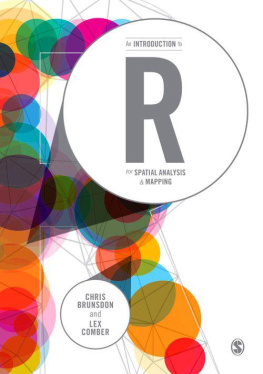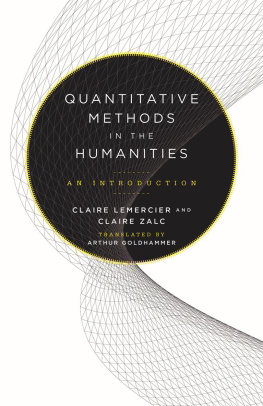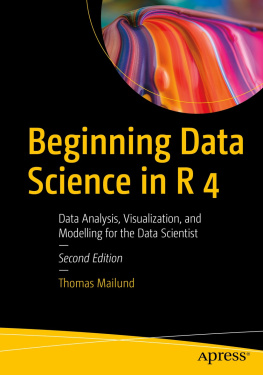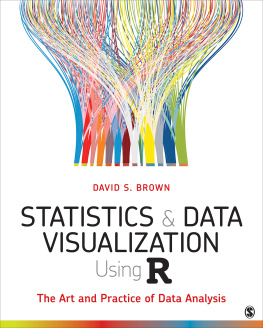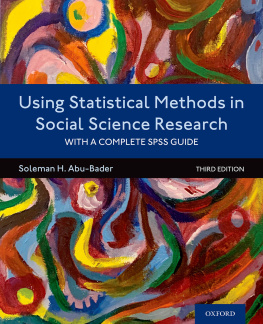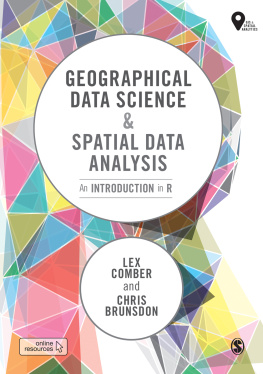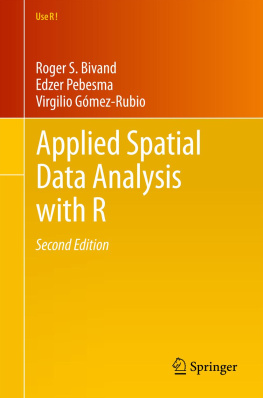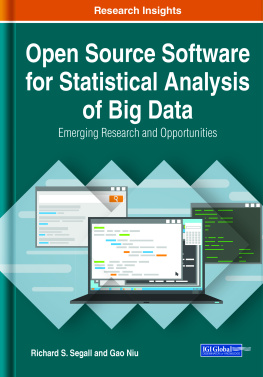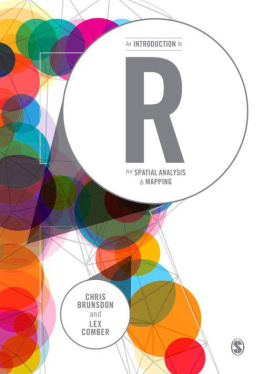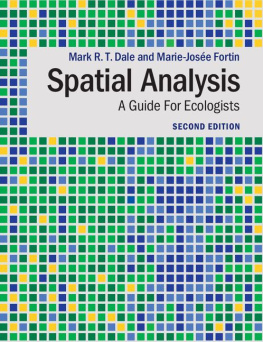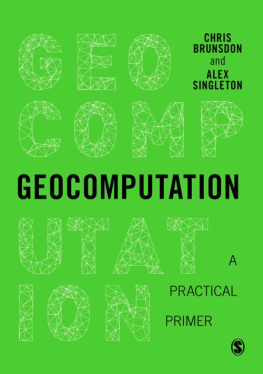Brunsdon Chris - An Introduction to R for Spatial Analysis and Mapping
Here you can read online Brunsdon Chris - An Introduction to R for Spatial Analysis and Mapping full text of the book (entire story) in english for free. Download pdf and epub, get meaning, cover and reviews about this ebook. year: 2015, publisher: SAGE Publications Ltd, genre: Computer. Description of the work, (preface) as well as reviews are available. Best literature library LitArk.com created for fans of good reading and offers a wide selection of genres:
Romance novel
Science fiction
Adventure
Detective
Science
History
Home and family
Prose
Art
Politics
Computer
Non-fiction
Religion
Business
Children
Humor
Choose a favorite category and find really read worthwhile books. Enjoy immersion in the world of imagination, feel the emotions of the characters or learn something new for yourself, make an fascinating discovery.
- Book:An Introduction to R for Spatial Analysis and Mapping
- Author:
- Publisher:SAGE Publications Ltd
- Genre:
- Year:2015
- Rating:4 / 5
- Favourites:Add to favourites
- Your mark:
An Introduction to R for Spatial Analysis and Mapping: summary, description and annotation
We offer to read an annotation, description, summary or preface (depends on what the author of the book "An Introduction to R for Spatial Analysis and Mapping" wrote himself). If you haven't found the necessary information about the book — write in the comments, we will try to find it.
In an age of big data, data journalism and with a wealth of quantitative information around us, it is not enough for students to be taught only 100 year old statistical methods using out of the box software. They need to have 21st-century analytical skills too. This is an excellent and student-friendly text from two of the world leaders in the teaching and development of spatial analysis. It shows clearly why the open source software R is not just an alternative to commercial GIS, it may actually be the better choice for mapping, analysis and for replicable research. Providing practical tips as well as fully working code, this is a practical how to guide ideal for undergraduates as well as those using R for the first time. It will be required reading on my own courses.
- Richard Harris, Professor of Quantitative Social Science, University of Bristol
R is a powerful open source computing tool that supports geographical analysis and mapping for the many geography and non-geography students and researchers interested in spatial analysis and mapping.
This book provides an introduction to the use of R for spatial statistical analysis, geocomputation and the analysis of geographical information for researchers collecting and using data with location attached, largely through increased GPS functionality.
Brunsdon and Comber take readers from zero to hero in spatial analysis and mapping through functions they have developed and compiled into R packages. This enables practical R applications in GIS, spatial analyses, spatial statistics, mapping, and web-scraping. Each chapter includes:
- Example data and commands for exploring it
- Scripts and coding to exemplify specific functionality
- Advice for developing greater understanding - through functions such as locator(), View(), and alternative coding to achieve the same ends
- Self-contained exercises for students to work through
- Embedded code within the descriptive text.
This is a definitive how to that takes students - of any discipline - from coding to actual applications and uses of R.
Brunsdon Chris: author's other books
Who wrote An Introduction to R for Spatial Analysis and Mapping? Find out the surname, the name of the author of the book and a list of all author's works by series.

